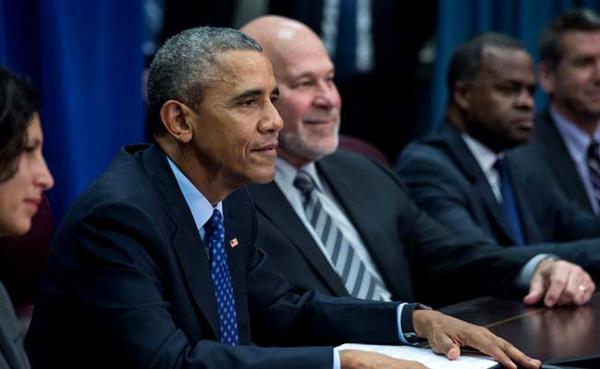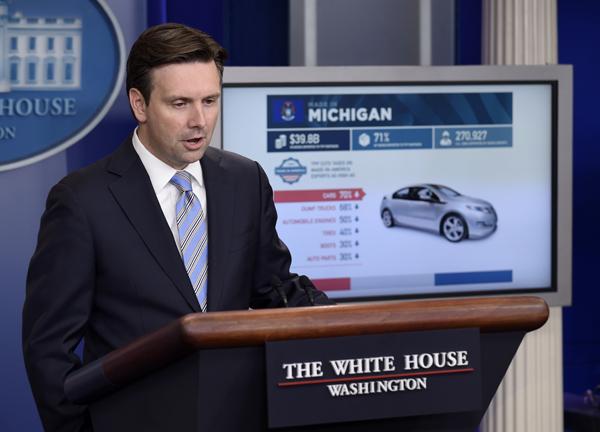You are here
Gov’t aims to double exports to $900b
By Agencies - Apr 02,2015 - Last updated at Apr 02,2015
NEW DELHI — India on Wednesday set an ambitious target of almost doubling its annual exports to $900 billion in the next five years as it seeks to boost the economy and provide jobs for a growing population.
Commerce Minister Nirmala Sitharaman said the government would encourage domestic manufacturing to increase exports from $469.5 billion in the 2013-14 financial year.
She said the government wanted to increase India's share of global exports from the current 2 per cent to 3.5 per cent.
"This new policy lays out a stable and sustainable roadmap for India's global trade engagement in the coming years," Sitharaman said at a press conference.
Right-wing Prime Minister Narendra Modi promised to bring development and new jobs to India when he swept to power last spring.
But sceptics say the government will first have to tackle corruption, unreliable power supplies and the country's dilapidated infrastructure.
Analysts said the new export target looked ambitious.
"The hurdle will essentially be the global environment, where the growth is moving up but the growth in trade is not moving in the same way," said D.K. Joshi, chief economist at Indian ratings agency CRISIL.
"There are also issues with India's export non-competitiveness, which is essentially on domestic factors which the government can control and address," he added.
According to Sitharaman, the government would focus on "addressing constraints within the country", including weak infrastructure and red tape.
"Our target is to move towards a paperless working environment," she said, adding that the government was working on allowing exporters to submit documents electronically.
Defence and e-commerce would be priority sectors, Sitharaman remarked.
Separately, the government plans to pull its tariff regime closer in line with global norms to prepare for new regional trade pacts being negotiated by advanced economies.
India has not been invited to join pacts such as the US-led 12 country Trans-Pacific Partnership (TPP) and is "not in a position to join", partly because its tariffs are not competitive, a top official said at the unveiling of a new five year trade policy.
"If the country is to stand up to these agreements, it's important that we start to address these issues," Trade Secretary Rajeev Kher said, adding that India's access to markets was likely to erode when such pacts take effect.
According to Kher, India needed lower tariffs for intermediate goods to help it further integrate with global supply chains, and that these industries would have to come more competitive. He did not give more details.
Regional trade pacts are being promoted by advanced economies after years of failure to negotiate a global agreement under the World Trade Organisation.
TPP would link a dozen Asia-Pacific economies by eliminating trade barriers and harmonising regulations in a pact covering two-fifths of the world economy and a third of all global trade.
China, which is not part of the TTP negotiations, is pushing for a separate trade liberalisation framework.
"They have been explicit about the fact that there are these mega agreements that we are not invited to — as a response to that they are trying to fix things internally," said Akshay Mathur, head of research at foreign policy think tank Gateway House.
Kher said India was interested in a third grouping known as RCEP that combines Southeast Asian nations and six others -Australia, China, India, Japan, New Zealand and South Korea.
"India expects to be a major beneficiary of the ASEAN Plus six trade pact for which negotiations are likely to be completed by year end," Kher added.
Experts say the viability of that grouping may depend on India's progress in easing domestic regulations and external barriers that constrain economic activity.
In the first 11 months of the fiscal year to March 2015, merchandise exports stood at $286.58 billion, down from $314.4 billion in the previous year.
Related Articles
WASHINGTON — US President Barack Obama took a dig at China Saturday as he defended the new Trans-Pacific Partnership (TPP) free-trade deal,
WASHINGTON/SYDNEY — The long-awaited text of a landmark US-backed Pacific trade deal was released on Thursday, revealing the details of a pa
SINGAPORE/HANOI — Fifteen Asia-Pacific countries on Sunday signed the world’s biggest free trade deal, seen as a huge coup for China in exte


















